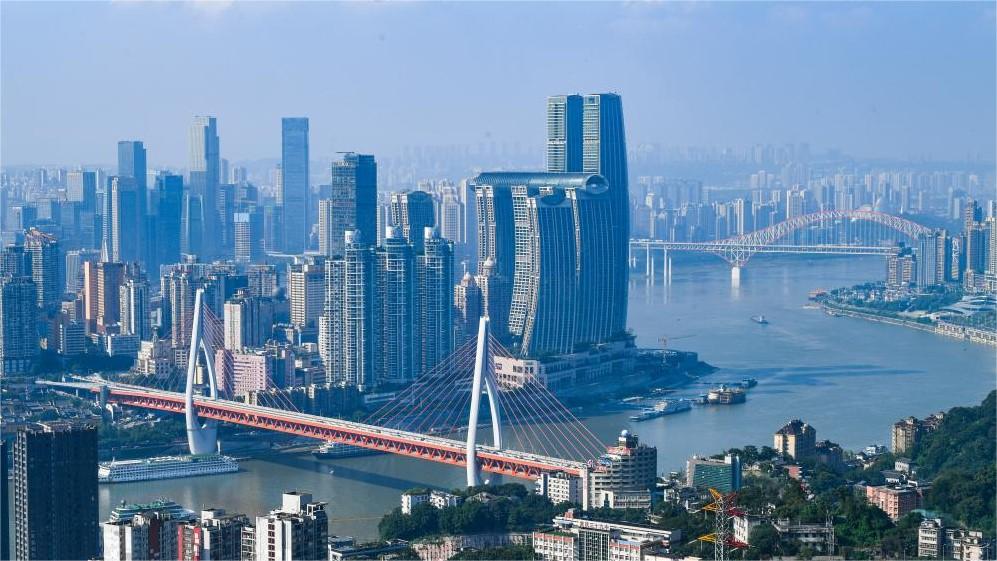China's economy shows resilience

SONG CHEN/CHINA DAILY
Headlines on the global economic outlook have shifted from a foundering recovery amid a cost-of-living crisis early this year to concerns over imminent recession, particularly in continental Europe. There is growing conviction that the central banks of developed economies will maintain high rates for a longer time.
The argument that more demand destruction is needed to contain high inflation is gaining ground. At the same time, the slow pace of China's economic recovery is adding to the global headwinds. Oftentimes, the debate is mingled with questions on how resilient is the Chinese economy.
Is China tracking a slower potential growth trajectory? Structural factors suggest China will not be able to maintain the 8 percent average real GDP growth rate of the past two decades. To begin with, growth will naturally slow down as the economy gets bigger and more mature. Also, China is losing some of its former advantages, such as abundance of labor and low factor cost of production.
So, instead of increasing factor input, China is likely to rely more on productivity enhancement and a better mix of productive factors to drive growth.
But is the recovery of the Chinese economy faltering?
Most economic indicators, including retail sales and industrial production (+4.6 and 4.5 percent respectively in August) have reported healthy growth in recent months. The contraction in exports continued at a slower pace (-8.8 percent in August compared with-14.5 percent in July priced in dollar) while the purchasing managers' index improved to 49.7 in August from 49.3 in July. Overall, economic activities are showing signs of stabilization, though further policy support will be needed to reinvigorate the real estate sector and attract more investment.
Therefore, can the Chinese economy be said to be resilient? This is one of the hottest topics dominating public debate. Before addressing this question, it would be better to take a look at the concept of economic resilience.
Economic resilience means how well an economy anticipates, prepares and recovers from external shocks (or even avoids them).
Looking through the lens of economic resilience, changes in economic readings and regulations are being seen in terms of whether they increase or decrease vulnerability, not in terms of whether they contribute to or negate economic growth.
GDP growth and economic resilience are interconnected and mutually reinforcing. For instance, faster economic growth can contribute to greater economic resilience by strengthening the country's fiscal position. However, equating GDP growth with economic resilience and vice versa would be a mistake because a country, despite undergoing a soft patch of growth, could still be economically resilient.
Economic resilience is built on many initiatives. Some include measures to broaden the country's economic base, introduction of macro-prudential measures, and the strengthening of fiscal disciplines, among others. Some typically involve institutionalized measures to contain and mitigate external shocks.
Given this fact, it is conceivable that some initiatives that boost economic resilience could negatively impact growth. The balance of growth-versus-fragility typifies many policy choices. An example will be increasing capital account openness, which will facilitate the development of broader and deeper capital markets while increasing financial and currency risks.
Similarly, deleveraging China's highly indebted property sector, which will contribute to higher economic resilience, comes at the cost of temporarily depressing construction activities. Also, some initiatives do not involve growth-fragility trade-offs, like lowering regulatory barriers, increasing regulatory quality and certainty, and other product and labour market policies. On the other hand, not all contributors to resilience show up in GDP calculation, like income distribution and pollution.
Anecdotal evidence helps to highlight examples that show the resilience of the Chinese economy. For instance, during the three-year-long COVID-19 pandemic, China transitioned to more localized production networks by leveraging its vast domestic consumption base. Increasing digitalization of trade and the extension of production networks closer to final consumers are also demonstrations of the high level resilience of China's industrial base.
While there are differences across resilience indexes due to the variation in factors used, there are also some commonalities. For instance, China can significantly improve its economic resilience by intensifying its decarbonization efforts. And there are positive signs that China is moving swiftly to address this issue.
China's offshore wind power added about 5 million kilowatt of installed capacity in 2022, accounting for nearly half of the global total. The world's first 16-megawatt ultra-large-capacity offshore wind turbine, located on a Fujian offshore wind farm, was connected to the national grid on July 19 this year. This achievement is part of China's decarbonization efforts to boost its overall economic resilience in the years to come.
Economic resilience and sustainable growth are long-term national objectives. Cyclical fluctuations in economic performance should not be confused with increasing vulnerability. This is particularly true as China moves away from its previous reliance on post-incidence initiatives (for example, counter-cyclical fiscal stimulus) to focus more on pre-incidence initiatives (for instance, fiscal consolidation and fiscal disciplines).
In insurance, resilience refers to a society's ability to recover quickly from external shocks like typhoons or earthquakes. That requires a multi-stakeholder risk management approach, including risk identification (exposure to different natural catastrophes), early warning systems (alert of approaching typhoons), risk mitigation measures (robust building codes) and robust post-disaster response (reconstruction efforts). The same applies to economic resilience.
The author is chief economist at Peak Reinsurance Company.
Photos
Related Stories
- Foreign firms satisfied with China's business environment: survey
- Reforms, policies propel financial sector's high-quality development
- China's manufacturing PMI falls in October
- China's non-manufacturing sector maintains expansion in October
- Key meeting sets tone on China's financial development
- Gov't officials, business representatives optimistic about China's economy
Copyright © 2023 People's Daily Online. All Rights Reserved.









